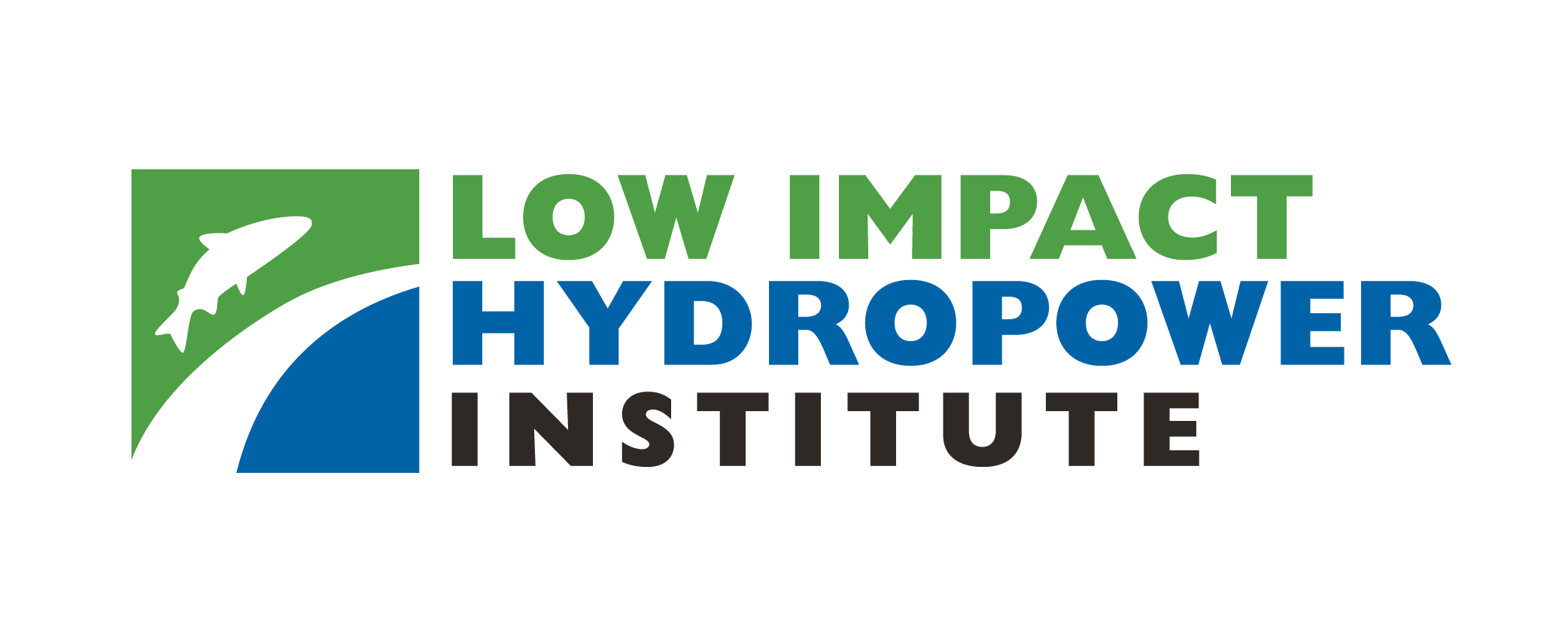LIHI 證書 #44 - 馬薩諸塞州冰屋項目

| 項目名稱 | 冰屋 |
| 理海證書編號 | 44 |
| LIHI 證書期限 | 2019年8月6日 2032年8月5日 |
| 擁有者 | 冰屋合作夥伴 |
| 狀態 | 麻薩諸塞州 |
| 地點 | 位於馬薩諸塞州艾爾市納舒厄河 26.9 英里處,艾爾、哈佛和雪莉鎮的交匯處。 |
| 裝置容量 | 0.280 兆瓦 |
| 平均年發電量 | 1,133 兆瓦時 |
| 設施類型 | 徑流 |
| 聯邦能源監管委員會 不。 | P-12769 豁免 2008 |
冰屋計畫位於麻薩諸塞州艾爾市的納舒亞河畔。 壩 自1790年代以來一直投入使用,並被用作規劃附近城鎮的參考標記。選擇該地點可能是因為河床中有一個岩石露頭,可以為水壩提供堅固的錨固。目前的大壩建於1909年, 發電站,採用維多利亞時期的折衷主義和磚砌板式建築風格。從1790年到1967年,該地曾用於磨粉、造紙、染料生產和製冰。 1980年代的一場大火摧毀了大部分發電站。
現任工程業主於1999年購得該地塊,並耗時九年對原址進行了全面修復,包括發電站、水壩和閘門結構。毗鄰的磨坊建築也進行了徹底重建。所有建築結構均採用符合歷史的建築材料和設計進行修復。
該項目上游是馬薩諸塞州菲奇堡市擁有的幾座水壩,以及大型瓦楚塞特 壩 位於馬薩諸塞州克林頓的馬薩諸塞州水資源管理局供水系統的一個水庫。該項目下游是佩珀雷爾水壩水力發電計畫以及新罕布夏州的其他下游水壩,包括 傑克遜米爾斯計畫 (LIHI #54).
該項目包括冰屋大壩, 溢洪道、閘門結構、電力 運河、發電站、兩台渦輪發電機組、尾水、傳動設備和旁路段。
冰屋大壩長 190 英尺,高 12 英尺,頂部設有溢洪道,高 24 英寸 閃光板此專案設有閘門結構,配備四個8英尺高、10英尺寬的 蓋茲,通往一條50英尺寬、109英尺長的發電渠。修復後的發電站內有兩台渦輪發電機組,總裝置容量為280千瓦,位於渠中距閘門下游約75英尺處。發電用水從發電站排入一條50英尺寬、400英尺長的尾水渠(從閘門到尾水出口測量)。該工程運作期間繞過的納舒亞河河段(從大壩到尾水出口測量)長約300英尺。
該項目以瞬時 徑流 模式,並攔截一個 137 英畝的水庫。該專案配備了實時水位記錄裝置,以使渦輪流量與河流流入量相匹配。當納舒厄河的流量等於或小於一個渦輪機組的水力容量(160 立方英尺/秒)時,沒有機組運行,所有流入水都會溢出閘門。當流量超過 160 立方英尺/秒時,一個渦輪機組開始發電,多餘的水會溢出閘門,直到流入量超過額外的 160 立方英尺/秒或 320 立方英尺/秒(兩個機組的水力容量),此時第二個渦輪機組開始發電,所有超過 320 立方英尺/秒的流量都會溢出。該項目需要每天提供 100 萬加侖的旁通流量。這種流量製度是與馬薩諸塞州漁業和野生動物部門 (MDFW) 協商制定的。
項目範圍內的水域被指定為 B 類,即要求有適合水生生物、野生動物的棲息地,並且適合進行初級和 二次接觸娛樂工程附近水域的總磷、大腸桿菌和沈積物毒性均受到影響,而工程上游(15英里)水域的pH值和溶解氧則受到影響。上游的損害可能是由於污水處理廠的排放造成的。納舒厄河長期以來一直存在水質問題,但隨著時間的推移,情況已顯著改善。納舒厄河流域協會的審查指出,該計畫不太可能是造成損害的原因。上游污水處理廠、下水道溢流、雨水徑流以及河流歷史上的工業用途可能是造成損害的原因。
納舒厄河是梅里馬克河的一部分 流域 這裡棲息著許多洄游魚類,包括美洲西鯡、河鯡和大西洋鮭。 全流域 漁業恢復工作的重點是恢復鯡魚和鯡魚族群。目前,下游大壩阻礙了魚類進入該計畫。一旦佩珀雷爾大壩安裝通行通道,資源機構將規定該工程的通行措施。美洲鰻也在這裡,上游 鰻梯 方便工程通行。虹吸管提供 吸引力流 並保持梯子底部濕潤。每年春季冰雪消融後,通道會被拆除進行維護,並重新放入水中。此通道措施是與馬裡蘭州漁業和野生動物管理局 (MDFW) 和美國魚類及野生動物管理局 (USFWS) 協商制定的。此外,雖然並非為此設計,但該計畫透過溢洪道槽口的最小流量為河流魚類和鰻魚提供了非正式的下游通道。淨距為 2 英吋的攔污柵可緩解 夾帶 較大的魚。
項目佔地11英畝。項目周圍環繞著 牛軛湖 國家野生動物保護區和納舒亞河被指定為 野生風景河 在該範圍內。業主將日常植被管理限制在割草和修剪的範圍內,以保護海岸線。業主在進行蓄水池降水活動之前,會諮詢馬薩諸塞州自然遺產和瀕危物種計畫。降水活動僅在7月至10月期間進行,以免干擾築巢和其他野生動物活動。
計畫附近可能存在的受威脅或瀕危物種包括北長耳蝠和布蘭丁龜。計畫區域內不存在北長耳蝠的關鍵棲息地。非緊急放水時間僅限於7月至10月,以保護海龜活動。專案每年都會提供在專案區域100英尺範圍內進行的作業報告。 濕地 或根據艾爾鎮《條件令》和馬薩諸塞州自然遺產與瀕危物種計畫指南,距離河流200英尺以內。其他週邊土地歸附近城鎮、麻薩諸塞州政府、美國魚類及野生動物管理局或牛軛湖國家野生動物保護區所有。
計畫區域的文化資源包括西大街冰屋工業區,其中包括工程的電力運河、水壩、發電站以及相鄰的辦公大樓。所有這些都可能有資格列入 國家歷史遺跡名錄.
PLUS-標準型: 發電站的修復工作謹慎地進行,包括使用符合歷史的材料,並保留了原發電站遺址中重要的歷史建築元素。現代化的格雷迪研究大樓建在被摧毀的舊磨坊舊址上。這座現代化建築的設計與當時的歷史時期相符,遊客往往認為它是原址的原始建築。業主保留了約1903年建造的原始渦輪機和閘門的遺跡,這些遺跡現已向公眾展示。專案業主提供有關該遺址歷史的講解,並組織了許多資訊豐富的教育性導覽。
該計畫的休閒資源包括獨木舟搬運處和非正式的釣魚通道。工程艾爾一側的河岸陡峭,公眾通行過於危險,因此已張貼警示標誌。在安全的地方,民眾可免費通行。
合規狀態
此證書包含以下條件:
條件一: 如果設施所有者在本 LIHI 認證有效期內收到 USFWS 或 MDFW 的通知,表示溯河產卵或 洄游性 如果需要捕魚,船東應向 LIHI 轉發該通知的副本以及啟動協商並隨後實施通行的計劃摘要和時間表。
2025: 未發現任何重大變更或合規問題。根據年度審查結果,該項目仍然合規。對於條件 1,項目報告的狀態沒有改變。
2024: 未發現任何重大變更或合規問題。根據年度審查結果,該項目仍然合規。對於條件 1,項目報告的狀態沒有改變。
2023: 未發現任何重大變更或合規問題。根據年度審查結果,該項目仍然合規。對於條件 1,項目報告的狀態沒有改變。
2022: 未發現任何重大變更或合規問題。根據年度審查結果,該項目仍然合規。對於條件 1,項目報告的狀態沒有改變。
2021: 未報告任何變更或合規問題。根據年度審查,該項目仍然合規。對於條件1,項目報告未收到任何通知。
2020: 未報告任何變更或合規問題。根據年度審查,該項目仍然合規。對於條件1,項目報告未收到任何通知。
2019: 目前證書的年度報告尚未生效。
認證歷史
2022 年 1 月 1 日: 根據 2022 年 1 月 1 日發布的 LIHI 第二版認證手冊第 2.05 版,LIHI 證書期限已延長。
2019 年 10 月 31 日: 對冰屋水力發電計畫進行重新認證的決定為最終決定。申訴期於2019年10月30日結束,期間未收到任何申訴。此計畫新的認證期限為2019年8月6日至2027年8月5日。
2019年9月30日: 2019年9月27日,低影響水力發電研究所初步批准了Ice House水力發電計畫(LIHI #44)的低影響重新認證。該決定尚待30天的申訴期過後才能做出。只有在60天的評論期內對初始申請發表意見的人員才有資格提出申訴。此類申訴需要解釋為何該項目不符合LIHI的標準。申訴請求可以透過電子郵件發送至 評論@lowimpactHydro.org 請在郵件主旨中註明「Ice House Hydroelectric Project」(冰屋水力發電計畫),或郵寄至低影響水力發電研究所,地址:329 Massachusetts Ave, Suite 6, Lexington, MA 02420。所有申請都將發佈在網站上。申請人將有機會回复,回復也將發布。 請求必須在 2019 年 10 月 30 日美國東部時間下午 5 點之前收到。 完整的申請和審核報告如下。如果沒有收到申訴請求,且該決定成為最終決定,則該計畫的認證期限為2019年8月6日,為期八(8)年,將於2027年8月5日到期。
2019年7月19日: 低影響水力發電研究所 (LIHI) 已收到一份完整的冰屋水力發電計畫低影響重新認證申請。 LIHI 正在就此申請徵詢公眾意見。具體而言,我們想知道您是否認為該項目符合 LIHI 低影響認證標準(第二版手冊中修訂版)。請查看 LIHI 修訂版中的項目和標準。 手冊 然後查看下面該項目的申請資料。與特定 LIHI 標準(流量、水質、 魚道等等)將非常有幫助,但所有評論都會被考慮。意見可以透過電子郵件提交給研究所 評論@lowimpactHydro.org 請在主題行中註明“冰屋計畫評論”,或郵寄至低影響水電研究所,地址:329 Massachusetts Avenue, Suite 6, Lexington, MA 02420。 評論必須在 2019 年 9 月 19 日美國東部時間下午 5 點或之前收到 予以考慮。所有評論都將發佈到網站上,申請人將有機會回應。任何回應也將被發布。
2014年8月21日: 冰屋水力發電計畫已重新認證為低影響項目,繼續符合低影響水力發電研究所認證計畫的要求。認證期限為五年,自2014年8月6日起生效,至2019年8月6日到期。
2014年6月9日: LIHI 收到了馬薩諸塞州漁業和野生動物部門關於冰屋水力發電項目重新認證的評論函。您可以在下方「文件」部分閱讀該函全文。
2014年4月23日: 低影響水力發電研究所收到了冰屋水力發電計畫第二期認證申請。申請資料可在下方「文件」部分取得。
2009年10月22日: 冰屋項目已被認證為低影響項目,有效期為五年,自 2009 年 8 月 6 日生效,至 2014 年 8 月 6 日到期。
2009年8月6日: Ice House Partners 已提交 Ice House 水力發電計畫認證申請。公眾意見徵詢期將持續 60 天。
認證文件
2019年重新認證
2014年重新認證
- 2014年冰屋重新認證審查報告
- 冰屋重新認證申請 2014
- 申請附件 – 契約
- 申請附件-計畫邊界
- 申請附件 – 項目描述
- 申請附件 – 照片
- 申請附件 – 旁路 流動研究
- 申請附件 – 旁路流量研究 B 部分
- 冰屋 – 評論
